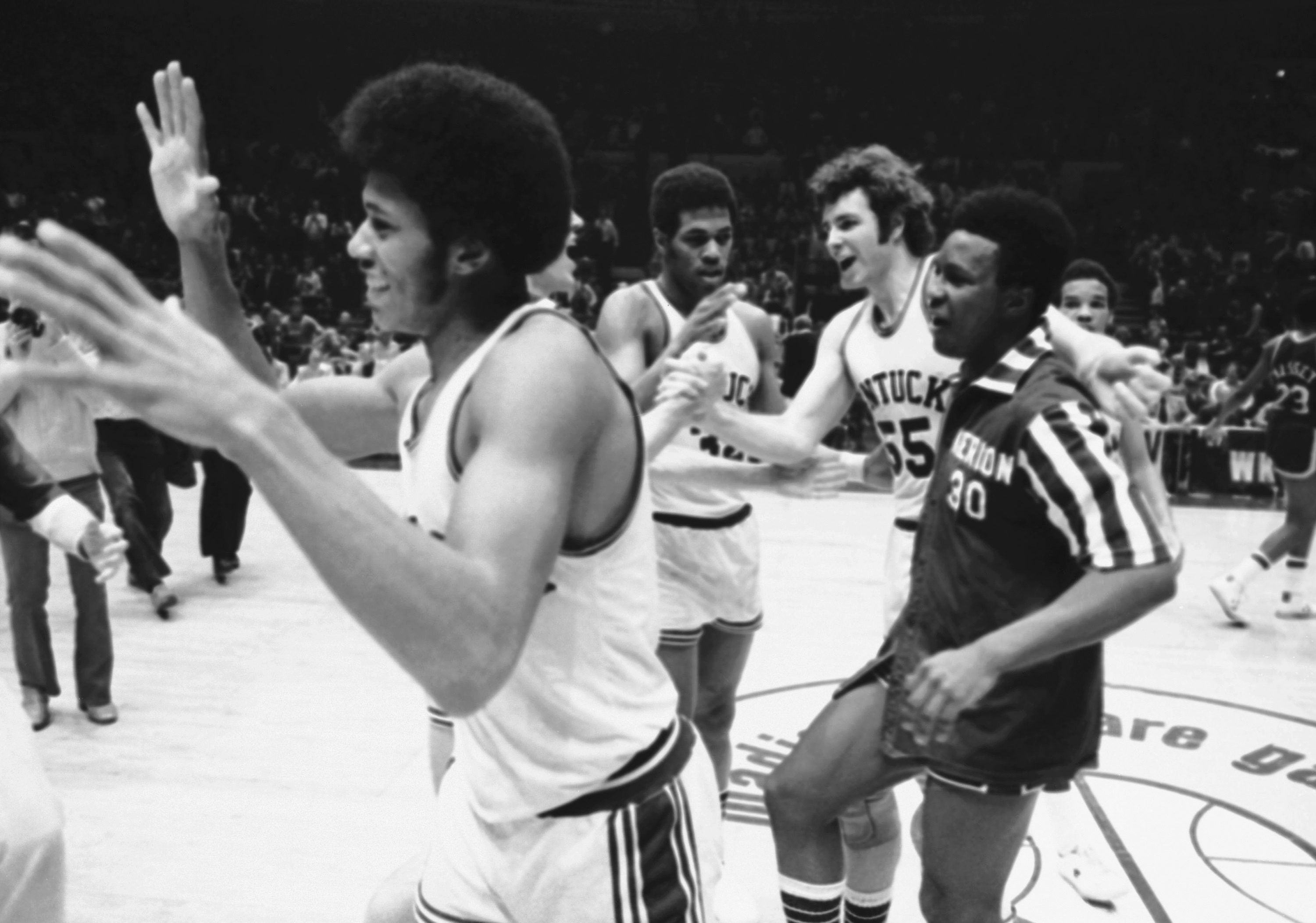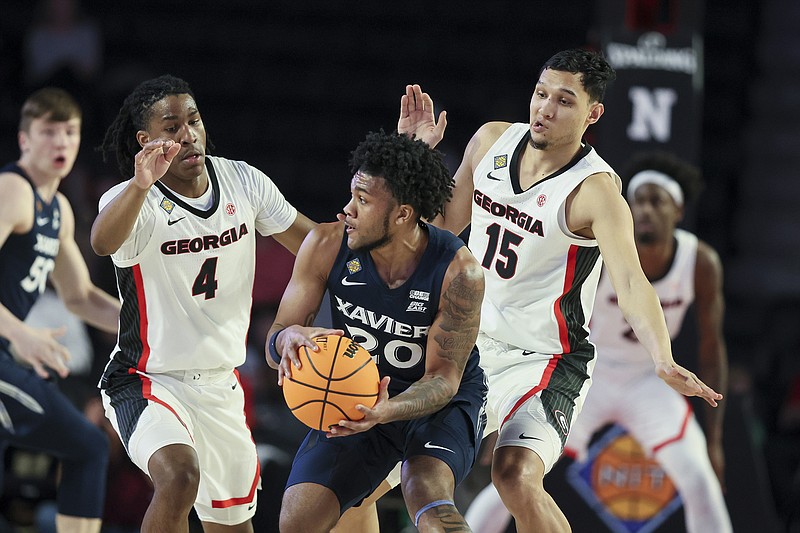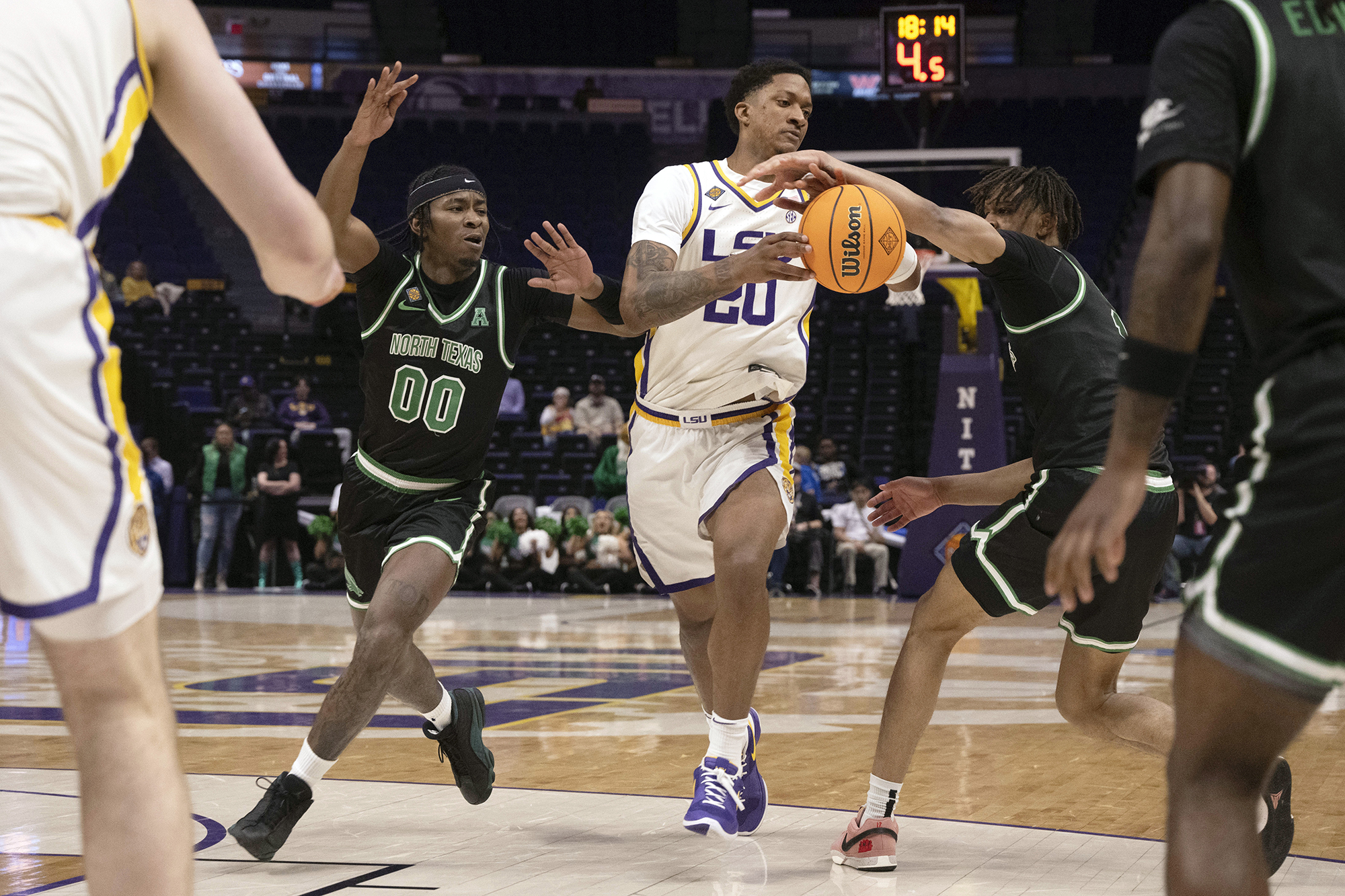The NCAA's changes to the National Invitation Tournament selection process this year were designed to preserve the viability of the once-storied men's basketball event in the face of possible competition.
By favoring teams from the power conferences, the logic went, TV viewership would be up, revenue would increase, and it would deal a blow to competing tournaments.
Then the rejections started piling up.
At least eight teams, including seven from the conferences given priority — the Atlantic Coast, Big 12, Big East, Big Ten, Pac-12 and Southeastern — either declined their invitations or made it known before Selection Sunday that they weren't interested.
Xavier, at 16-17, was one of the 32 teams included in the NIT and one of five Big East schools in the bracket (a sixth, St. John's, said no thanks), while much was made of only three teams from the conference making the NCAA tournament's 68-team field. Seton Hall was the Big East's only NIT team to win its opener, 75-72 over St. Joseph's in overtime.
Butler, Providence and Villanova all lost at home, while Xavier lost at SEC member Georgia, which will face Seton Hall in the NIT semifinals Tuesday in Indianapolis. Indiana State of the Missouri Valley Conference and Pac-12 program Utah are the other semifinalists.
Another first-round loser at home was the SEC's LSU — to North Texas, which won the NIT last year by beating the University of Alabama at Birmingham in a final featuring two teams from the mid-major American Athletic Conference. In all, six of the 16 seeded teams lost in the first round this year, all at home, and five of them were from power conferences.
Dan Gavitt, the NIT board chair and NCAA senior vice president of basketball, said money was a factor in making the changes, which he said will be evaluated.
"We're operating in a very dynamic and disruptive time in college sports. And that's part of our kind of calculus and decision making around this as well," he said. "We'll have to see how it plays out and have conversations with our conferences in our schools and decide how best to format and compose the NIT going forward."
 AP photo by Ray Stubblebine / Kentucky's Larry Johnson, left, lifts his arms in celebration as teammates James Lee, center, Mike Phillips (55) and Dwane Casey, congratulate each other after the Wildcats' 71-67 victory over UNC Charlotte in the NIT final at New York's Madison Square Garden on March 21, 1976.
AP photo by Ray Stubblebine / Kentucky's Larry Johnson, left, lifts his arms in celebration as teammates James Lee, center, Mike Phillips (55) and Dwane Casey, congratulate each other after the Wildcats' 71-67 victory over UNC Charlotte in the NIT final at New York's Madison Square Garden on March 21, 1976.Times have changed
The NIT is college basketball's oldest major postseason tournament and was once its most prestigious, with games played at New York City's Madison Square Garden from its inception in 1938 until 1977, when early rounds were shifted to campus and regional sites. The semifinals and final were left at the Garden, with New York a nice options for teams and fans left out of the NCAA field.
Changes have come of late. The 2020 NIT, like the NCAA tourney, was canceled because of the coronavirus pandemic, and the 2021 NIT was played with a smaller field in Texas. The 2022 final was back at the Garden, but last year the semifinals and championship matchup were held in Las Vegas, and this year's last three games will be played at Hinkle Fieldhouse, Butler's home gym.
Among the new bid changes, the NIT guaranteed spots to two teams from each of the power conferences not chosen for the NCAA tournament, regardless of their win-loss record. It also did away with guaranteeing a spot to any regular-season conference champion that fails to also win its conference tournament.
Myriad factors caused the changes, Gavitt said. Among those were talk that a new tournament was in the planning stages to rival the NIT for participants — and the reality that a half-empty arena at a power conference school might not look as compelling as a packed and raucous smaller gym, but it still draws more fans both in the building and on television.
"If we lose the high majors from participating in the NIT, it has a dramatic impact on the very viability of the event," he said.
A great atmosphere at a smaller venue may make for high drama, "but 2,000 people in a small venue versus 6,000 people in a large venue has a financial impact," Gavitt added.
Coaches at mid-major schools were admittedly "disappointed," Gavitt said, when the changes were announced in October, and that has hardly changed.
"Absurd," was Richmond coach Chris Mooney's reaction to the NCAA's announcement. His team won the Atlantic 10 regular-season title but not the league tournament and still earned an NIT invitation, but even before that, he said: "I think it's a joke, and I think that it's a kind of decision that makes everyone take the organization far less seriously."
First-year Notre Dame coach Micah Shrewsberry admitted to not being sure which side to take. He was an assistant at Butler, then of the Horizon League, when the underdog Bulldogs reached back-to-back NCAA tournament finals in 2010 and 2011, losing both.
"You can see it from either side, in a lot of different ways, who's getting hurt by these rules changes," Shrewsberry said.
Motivation matters in March
Ryan Odum knows the value of postseason play, wherever it is.
In 2017, the University of Maryland, Baltimore County won three games in the CollegeInsider.com Postseason Tournament, whetting their whistle for postseason play. The following year, UMBC became the first No. 16 seed to win an NCAA tournament game, a 74-54 stunner against Virginia. He has subsequently guided Utah State (2021) and Virginia Commonwealth University (2024) to the NIT in his first year with those programs.
"You've had some teams over the years, North Texas, I mean, you've had some teams that have really done well in the NIT, and it'd be a shame to take away some of those opportunities and give it just" to power conference programs, Odum said.
When North Texas won 84-77 at LSU last week, Tigers guard Trae Hannibal admitted he thought the Mean Green "wanted it a lot more than we did."
That differing level of desire has been a problem for the NIT before. In 2013, SEC power Kentucky — a year removed from the program's eighth NCAA championship — had to travel to Robert Morris for a first round game. Students and other fans packed the Colonials' gym, and the standing room-only crowd of 3,444 saw their underdogs send the Wildcats home as 59-57 losers.
Motivation isn't the only reason teams opt out, Gavitt said, highlighting another challenge in a vastly changing college landscape.
A coach's uncertain job status and player availability concerns cause some teams to decline an NIT berth. The transfer portal window opens right after Selection Sunday, and for teams left out of the 68-team NCAA field, going shopping for roster replacements might be more attractive.
Coaches have to accept changes, said Pittsburgh coach Jeff Capel, whose ACC team was one of those that declined the NIT's invitation.
"I think all of us need to understand that college athletics and college basketball is not the same as it was when we were younger, as we grew up, and everyone has to adapt to that and change and get used to it," he said before his team chose not to play. "Not saying we don't like it or we're going to like it, but that's the reality."

